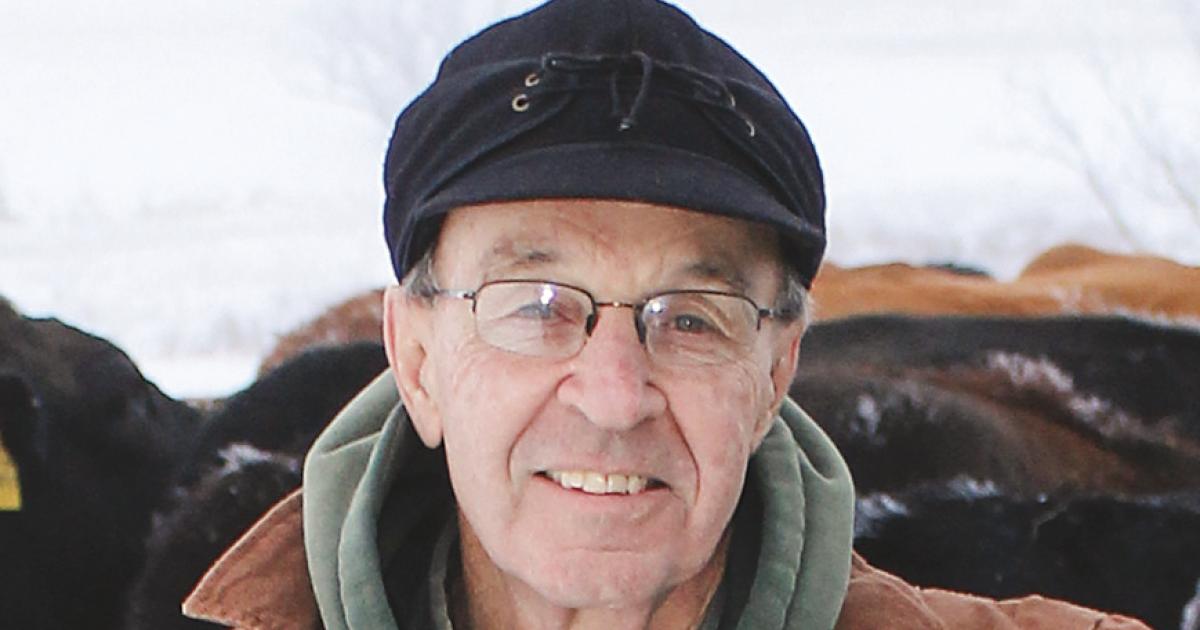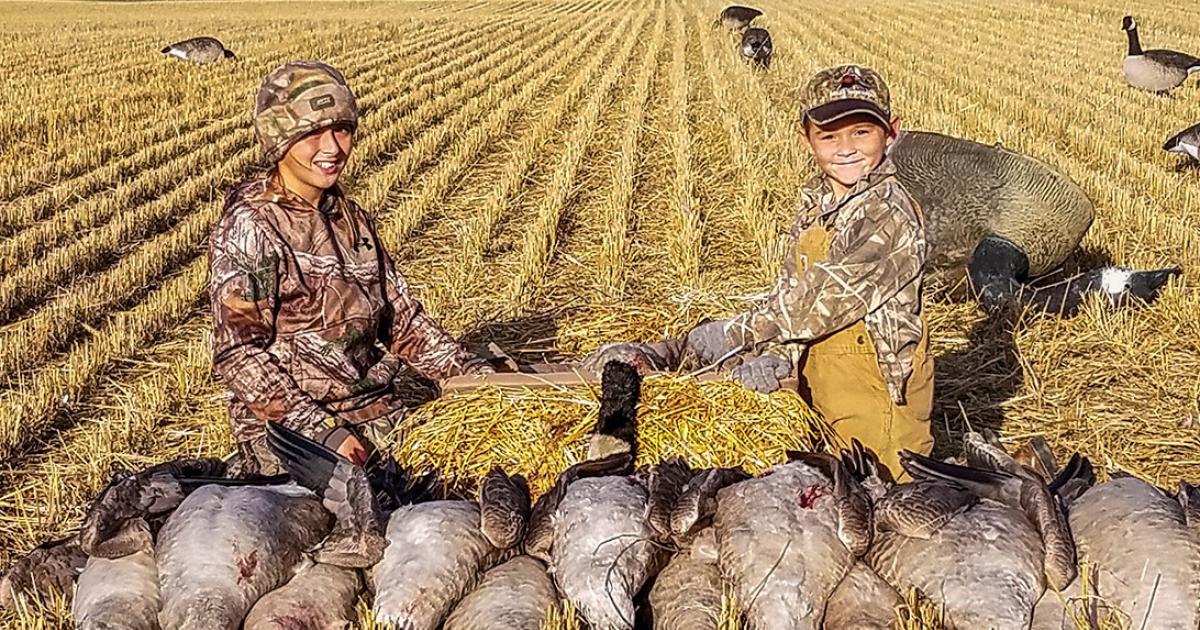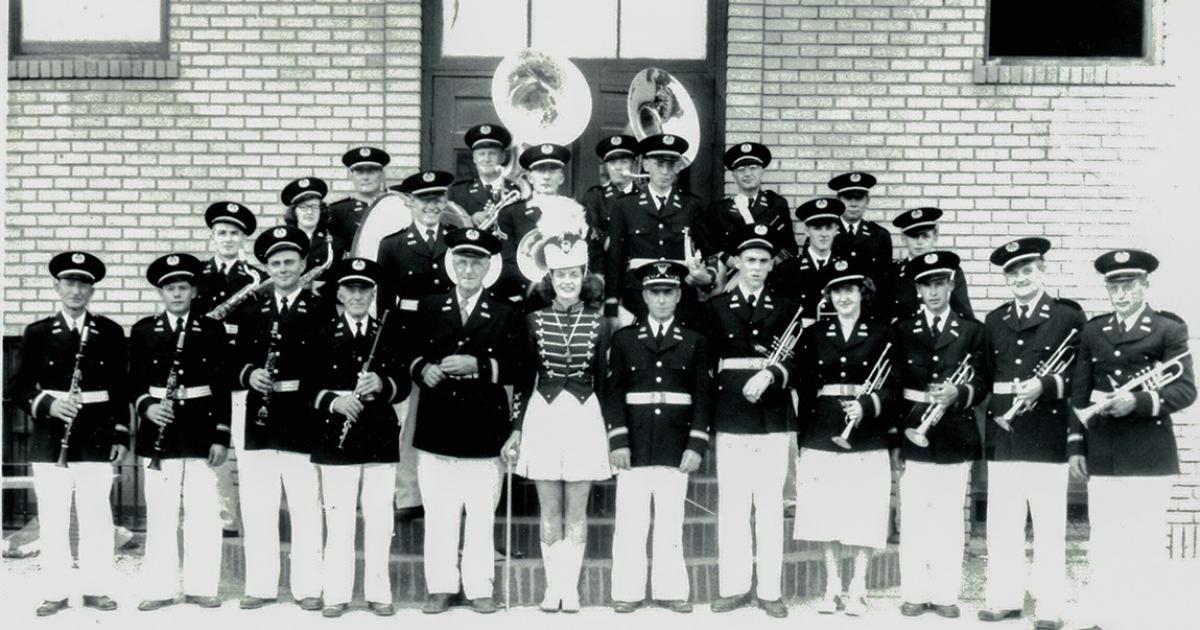At about this time 102 years ago - Nov. 26, 1916 - Henry Schaper and Katherina Stohler united in marriage. Their farming life would solidify in 1926 with their move to a farm north of Halliday, where they would raise 13 children.
Henry and Katherina Schaper were part of the devout, humble, hard-working Germans from Russia who settled rural North Dakota in the early 20th century. The Schapers were among the Germans from Russia families who forged farms, communities, churches and legacies which have endured and flourished.
This four-generation branch of the Schaper family tree includes: Sig Schaper, middle (son of Katherina & Henry); on his right: his daughter, Barb Schaper Fridley, his great-granddaughter -- Barb’s granddaughter, Demrey; on his left: his daughter, Deb Schaper Allmendinger, with his granddaughter -- Deb’s daughter, Elizabeth, holding his great-grandson -- Deb’s grandson/her son, Liam.
For the past 33 years, a special part of the Henry and Katherina Schaper legacy has been the focus of a group of their granddaughters. As a resource for appreciating Schaper family ties, the granddaughters, with the help of family members, have published a combined family history and recipe book. Steady family growth meant one volume would not suffice. The first edition was printed in 1985, and a second followed in 1995. This fall, the updated third edition of “Schaper Family Favorites” has been printed.
Sisters Deb Schaper Allmendinger and Barb Schaper Fridley (daughters of Sig, seventh of the 13 children, and Luella Schaper) and their cousin, Linda Schaper Rueb (daughter of Edwin, third of the 13, and Regina Schaper) are the team who coordinated the work on the new edition.
“Our hope is that this will continue to be a way to connect with each other, as our family has grown over the years. It is good to write down our recipes and recollections. Recipes are lost and memories fade if not recorded,” Deb says.
“One objective in doing the cookbooks is to compile and preserve history about our heritage that can be passed down to future generations,” Barb says. “The family has now grown to a size where the youngest of the generations has little or even no contact with other relatives, as the total number of Schaper descendants from Henry and Katherina now numbers over 450 members.”
“We hope to leave a legacy for generations to come. It is our family history, along with stories about the lives of Henry and Katherina, and their large family,” Linda says. “As the older grandchildren, we want to share our memories of growing up with those younger than us.”
Laurel Bergstedt Tveit (daughter of Lillian Schaper Bergstedt – fourth of the original 13 children – and Martin Bergstedt) adds the cookbook series is achieving what they hoped it would.
“I see the interest the cookbooks are sparking in the fifth generation. The cookbooks really are the thread that ties all the generations together,” Laurel says.
Recipe entries in the cookbook reflect the frugal, tasty preparations of homegrown and farm-grown ingredients. Each recipe is identified with a member of the family, or as just a family favorite.
Six of Henry and Katherina’s 13 children are still living; several have vivid memories of what this delicious, abundant food meant to them.
Fifth child, Mae (Mabel Schaper Teske), says the trip to town took two days for many horse-and-wagon travelers. The Schaper farm was a halfway point between Halliday and their homes, so travelers regularly stopped at the farm, often spending the night. Mae says her mother provided food to these guests, and so family members sharing food became a tradition.
Ninth child Wilfried (Willie) Schaper recalls food was always ready and generously shared. He says their home and farm was usually full of people and it was just in his mother’s nature to have food, especially homemade bread, ready for them.
Eleventh child Vera Schaper Barfield says her parents imparted the values of work and caring to their children. “Everyone, big or small, had a job – plowing and raking fields, milking cows, gathering eggs, ironing or washing dishes,” she recalls. “We relied on one another, which created closeness and protectiveness. We still have that today.”
To explain the importance of their food, Schaper family descendants of today simply declare: “Our aunts were good cooks!” Classic German-Russian foods, hot dishes, soups, breads and cakes were always available. They add that their uncles did their share, too, by processing the meat from their farm-raised beef and pork, making sausage and curing hams and bacon.
For the new third edition of the cookbook, about 100 family recipes have been carried over from the earlier editions.
Schaper family members emphasize that memorable home-cooked food was, and continues to be, a symbol of their togetherness. They emphasize the family has been deeply nourished by God, church, Bible reading, music and singing together.
The family views hospitality as a gift to be extended to all. Many years ago, the 13 original Schaper children began a tradition of holding twice yearly family reunions, and the tradition continues today.
This month’s recipe features – all from the new edition of “Schaper Family Favorites,” include Ritz Cracker Chicken, Sig’s Baked Sweet Rice, Stirrum and Date-filled Cookies.
For photographs of four generations of Schapers gathered – including young fourth-generation Schapers helping bake date-filled cookies – Deb Schaper Allmendinger welcomed North Dakota Living photographer Liza Kessel to the Allmendinger home in Hazen recently.
“Schaper Family Favorites, Third Edition 2018” is published in conjunction with Cookbook Specialists, Independence, Iowa. The cookbook can be purchased by sending a note to Deb Allmendinger, 5605 Hwy. 200 Hazen, ND 58545. The cost of the cookbook is $12.50 plus $4 postage.
Kent Brick is editor of North Dakota Living. He can be reached at kbrick@ndarec.com.










